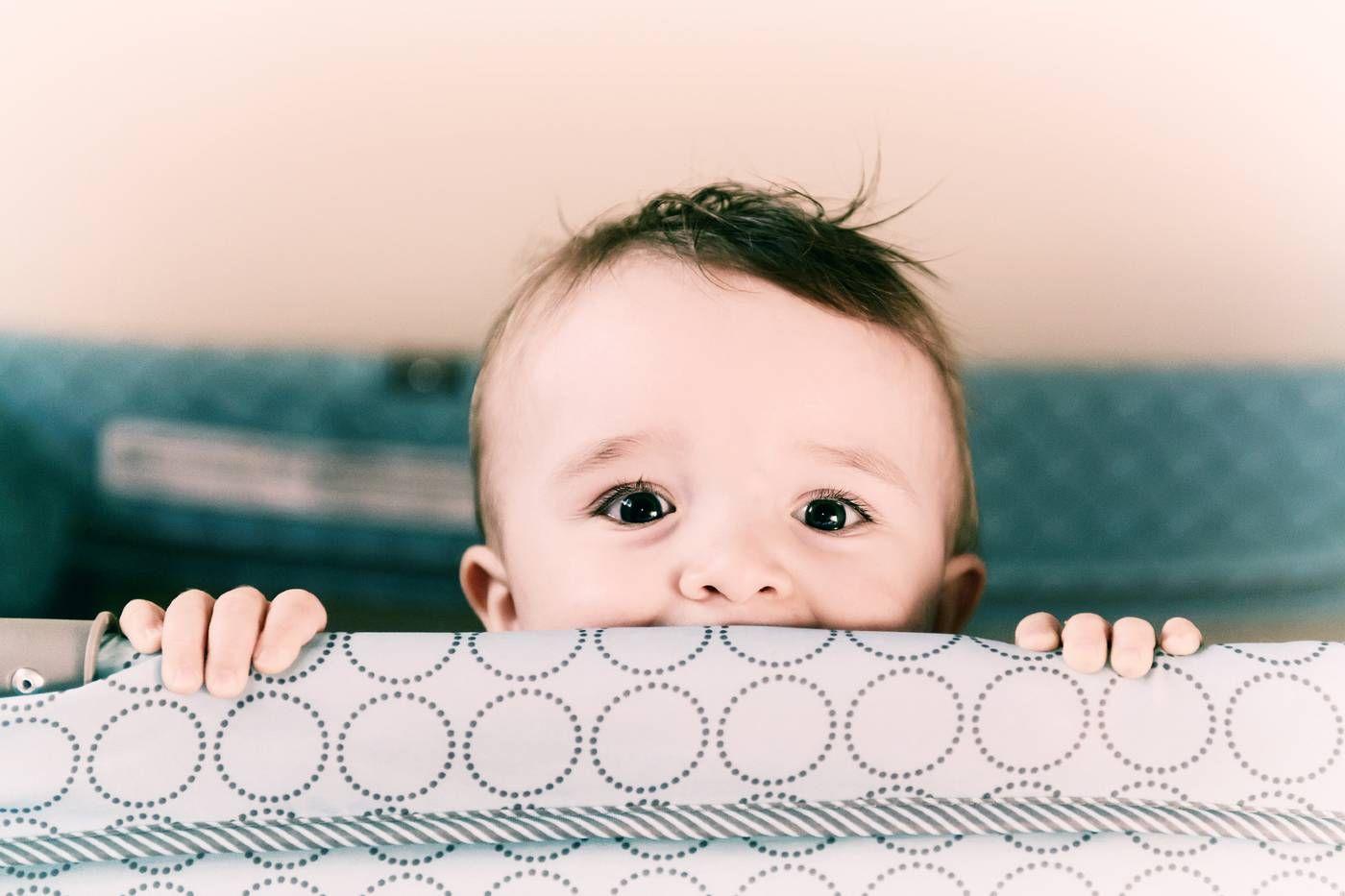BABY
Travel Cot Tips for Safe Sleep Away From Home
Here’s what to look for when buying a portable cot.

Written by
Dr. Harvey Karp

SHARE THIS ARTICLE
PARENT PICKS
Bestsellers
BABY

Written by
Dr. Harvey Karp

SHARE THIS ARTICLE
Bestsellers
Whether you’re heading to a long-awaited vacation, visiting family, or you simply need an extra sleep space in your home, travel cots are a must-have item for many parents. But before you buy the trendiest travel cot—or borrow a nearly-ancient play yard—you’ll want to make sure it’s as safe and functional as it can be. Here’s what parents should look for when buying a travel cot.
A portacot is another name for a portable cot. Travel cot are compact, lightweight, and especially designed for easy transport. Sometimes “play yard” and “travel cot” are used interchangeably, but they’re not always the same. For example, play yards tend to feature mesh sides or another non-rigid construction. While travel cots can mimic that, some portable cots are wood and foldable. Generally, travel cots and play yards can be used from birth to age 3.
Yes. Fortunately, the safety standards for portacots were recently upgraded. Of course, it’s imperative to use travel cots safely, which means always…
While safety, of course, is number one, there are other points to consider when buying a travel cot, such as:
While it may be tempting to borrow a cot or a play yard—or buy one used—proceed with caution. As a pediatrician, I lean toward buying new so you know for-sure your portable yard isn’t missing any parts and meets the most recent safety standards. But I also know that buying new can be hard for some families. So, if you are buying a secondhand portacot or are borrowing one, keep the following in mind:
If you know ahead of time that your baby will be snoozing in a play yard or travel cot during a trip, arrange to have them sleep in one at home first. The more familiarity the better! Speaking of familiarity, recreating your baby’s sleep surroundings is key, too. That means, dim the lights about 30 minutes before night-night, play the same white noise your little one loves, and wrap your baby in the same sleep sack or swaddle they’re used to. If your baby has been sleeping in SNOO and swaddled in a SNOO Sack, use SNOObie or SNOObear to recreate SNOO’s white noise—and use the Sleepea 5-Second Swaddle in the portable cot. Sleepea is the exact same expert design as the award-winning SNOO Sack, minus the “wings” that secure SNOO sleepers into the bassinet.
If your baby has been blissfully sleeping in SNOO, you may be wondering if SNOO is portable. While SNOO is not a portacot, many SNOO users do travel with their beloved bassinet! But if packing and traveling with SNOO is impossible, don’t worry! Babies tend to sleep okay on trips without their SNOO…as long as:
***
REFERENCES
Disclaimer: The information on our site is NOT medical advice for any specific person or condition. It is only meant as general information. If you have any medical questions and concerns about your child or yourself, please contact your health provider. Breastmilk is the best source of nutrition for babies. It is important that, in preparation for and during breastfeeding, mothers eat a healthy, balanced diet. Combined breast- and bottle-feeding in the first weeks of life may reduce the supply of a mother's breastmilk and reversing the decision not to breastfeed is difficult. If you do decide to use infant formula, you should follow instructions carefully.